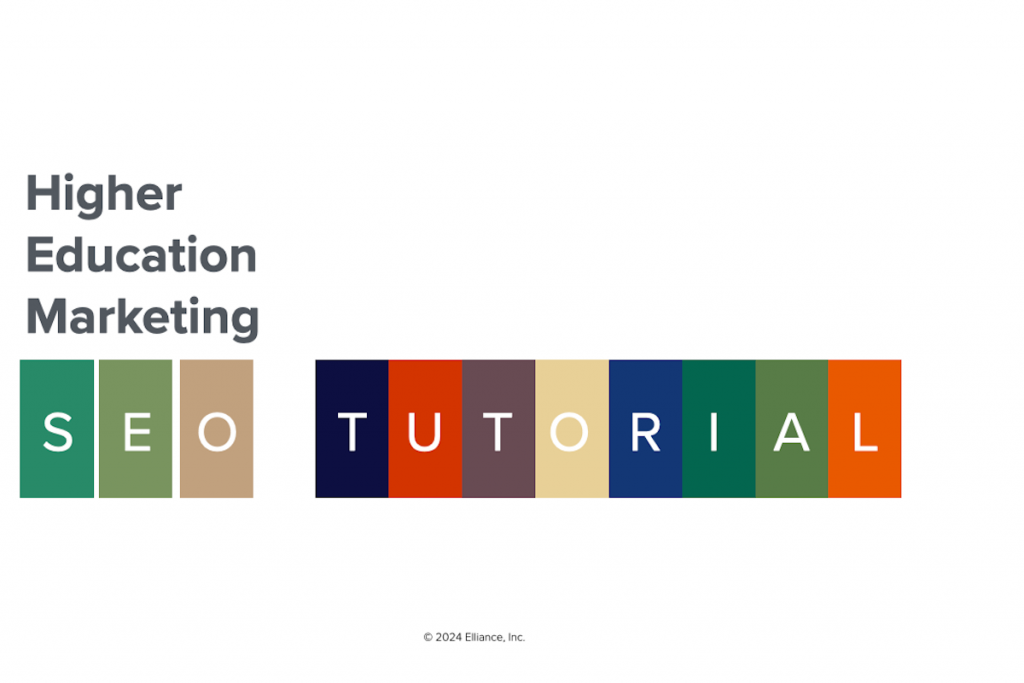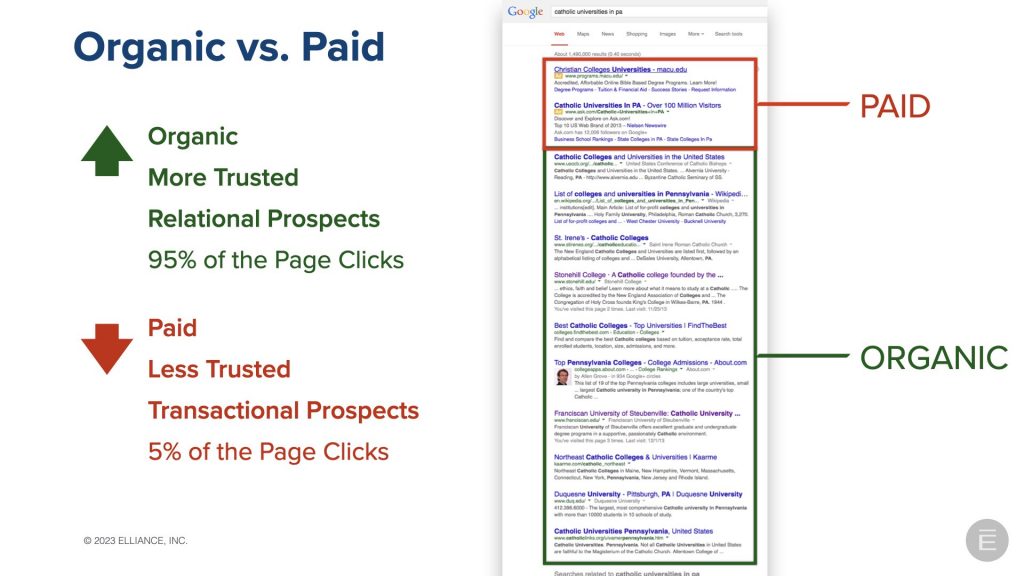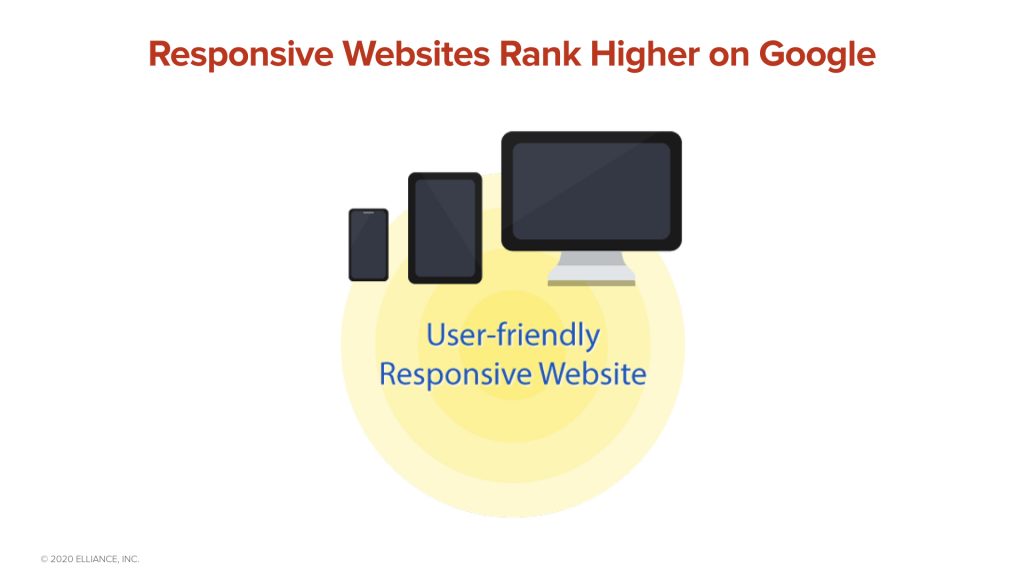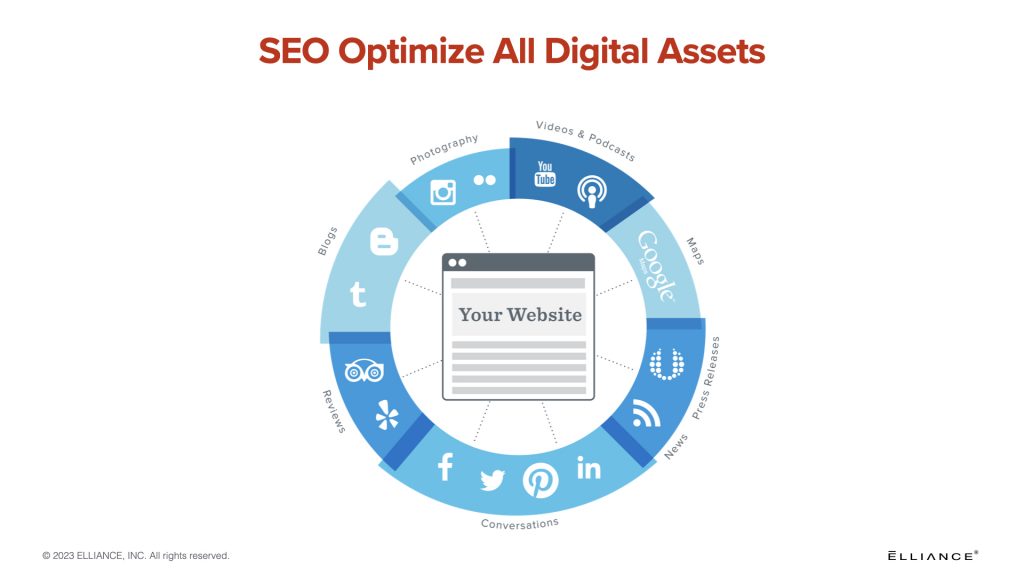| Dec 18, 2023
SEO Basics for Colleges, Universities and Higher Education Institutions

This SEO guide was written to help under-resourced, under-staffed colleges, universities and higher ed institutions out-wit and out-smart the deep-pocketed Goliaths. We call them small giants. As one of the leading higher education marketing SEO agencies, we learned the strategies and tactics presented here from serving numerous small giants of higher education — engineering schools, law schools, business schools, medical schools, nursing schools, healthcare schools, agricultural schools, professional schools, liberal arts colleges, stem colleges, Catholic colleges, faith-based universities and others. We salute them and their brave efforts.
What is SEO?
SEO or “search engine optimization” is a set of techniques higher education marketers deploy to improve their institution’s natural or organic website rankings on Google, Bing and other international search engines.

Why Colleges and Universities Embrace Search Engine Optimization (SEO)?
Colleges and universities that pursue and achieve top organic or natural Google rankings prosper and thrive. There are many reasons for this. A few are listed below:
- Prospective audiences trust organic rankings more and click on them more.
- Leads generated from organic rankings out-convert paid advertising leads three-fold.
- The best prospective students prefer to “discover” the college of their choice through “accidental finds” on Google page one and via word-of-mouth on social media and influencers.
- Universities grow enrollment, improve yield, and reduce melt with organic rankings.
- Colleges raise more money by securing thought leadership rankings on search engines.
- Higher education institutions ranked higher on search engines gain higher rankings with agencies like the US News, Financial Times, Business Week and others.
- Colleges ranked higher on search engines secure more partnerships with foundations, and more relationships with more major donors.
In summary, being found on page 1 is the best means for finding, getting, keeping and growing right-fit students, faculty, and staff as well as nurturing relationships with alumni, foundations corporate partners and media.
What are SEO Ranking Factors?
Five types of factors affect rankings:
- URL factors: Use symbolic and phrase tokens, not numbers. Use international domains for country-specific content.
- On-page factors: Use meta-data and infuse keywords into copy.
- Off-page factors: Secure inbound links from reputable websites to your website.
- Social factors: Foster conversations and content sharing on social media.
- Local factors: Embed location and country signals for your target regions.

Because Google rewards fresh content, marketers must create a continuous stream of high quality, trusted and relevant content (such as articles, blog posts, videos, infographics, white papers, thought leadership articles, social posts, quizzes, games, etc.) and ignite it via promotion and conversation-starters to encourage peer-to-peer sharing.
KNOW THAT SEO/INBOUND/CONTENT IS A LONG GAME
It takes several months to achieve local and regional rankings, and a year or more to achieve national and international rankings. Higher education marketers who have the patience and determination to achieve Google rankings create an enduring rising tide of rankings and are able to reduce their paid marketing spend as SEO rankings are achieved.

Paid advertising and SEO/inbound/content marketing are good alone, better together.
The following strategies have proven to grow undergraduate, graduate, online, adult and international student enrollment:
1. Establish a Multi-Year Attack Plan
Take the long view. Develop a plan that goes after the lowest hanging fruit first (local and regional rankings), then harder-to-achieve national rankings, and finally the hardest-to-achieve international and reputation rankings. Slow and steady wins the race.

2. Create a Keyword Lexicon
Craft a Keyword Lexicon that contains clusters of keywords and phrases spanning your academic programs, brand ideals, and areas of thought leadership, innovation and intellectual capital. Laying claim to the keywords begins with an intentional plan. Categories in the lexicon should include academic program keywords, brand positioning keywords, reputation keywords, decisioning keywords, and location keywords.

Know that prospects use different clusters of keywords at each phase of the decision funnel. e.g. they’ll use reputation keywords during the awareness phase, category keywords during the consideration phase and branded keywords during the preference/purchase phase.

3. Make Your Website Responsive, Secure and Fast
Google rewards responsive websites – ones that auto-adjust gracefully on smartphones, tablets or desktops. Google also ranks higher websites that load fast and are running in secure mode.

4. Build Quality Site Links
Use link baiting to secure quality inbound links pointing back to your website. Create and leverage great thought leadership content and jointly promote it with partners.

5. Infuse SEO into All Existing Digital Assets
Embed SEO smarts, tactics and strategies into the architecture, design, copy and programming of your prospecting, research, university magazine, centers of excellence and corporate relations websites.
Because Google serves up a mix of copy, images, videos, maps and tabular data on a search results page, make sure you optimize copy, images, videos, PDF’s, tables, links, and meta-data on every website page. Search engine bots also review assets on social media channels, so ensure these assets are also optimized.

6. Create Fresh Content to Secure and Sustain Top Rankings for Important Keywords
Because Google rewards websites with fresh content, develop a content strategy to create new content (microsites, blogs, magazine articles, etc.) for various parts of the decision funnel. Inform all content with the Keyword Lexicon.
The more competitive a keyword, the more high-fidelity the content (infographics, videos, quizzes, etc.) you’ll have to create to secure and sustain page 1 rankings.

7. Embrace Voice Search
We have entered a new era of “natural language”, “sentence based” and “question based” search with the advent of voice-activated search on mobile phones (like Google Assistant, Apple Siri, Microsoft Cortana and Amazon Alexa) and gadgets like Amazon Echo, Google Home, Apple HomePod and others. Since 50% of searches are now voice driven, take the following steps:
- Frequently asked questions (FAQs) are vital for voice search because they naturally match the conversational, question-and-answer format people use when speaking to voice assistants, improving discoverability and ranking.
- Write colloquially. Since people won’t change their speaking habits for the computer, write new content using everyday vernacular.
- Write page summaries. Write short, persuasive, 29-word page summaries above the screen fold on long-form pages. These summaries act as pop-up snippets served up by voice searches on mobile devices and home gadgets; they also appear as answer boxes on desktop search results.
- Get responsive. Speed it up. If your college website isn’t responsive yet (i.e. auto-adjusts gracefully to all devices), make it responsive, ensuring it’s fast, fully SEO-optimized and running in secure mode.
- Build social shares. Run social share campaigns because the more shared the page is on Facebook, X (formerly Twitter), LinkedIn and other social channels, the more likely it’ll surface on voice search.
- Think globally. Act locally. Since more than 20% of searches are local, add phrases such as ‘near me’ into your copy, especially if your college is a local or regional brand.
- Rank high on desktop and mobile search. It’ll automatically increase the chances of your website ranking high on voice search.
8. Monitor and Protect Keyword Rankings
Measure keyword rankings and competitors periodically. Respond to encroachment with counter-moves on an as-needed basis.
9. Measure Impact of SEO Efforts
Evaluate snapshots and trends for the following metrics:
- Percentage of traffic from search engines (ought to be 60-70%)
- Percentage of inquiries, visits and applications attributable to organic search (organic out-performs paid by 3X)
- Brand visibility on search engines (should trend upwards)
- Branded vs. non-branded traffic (a healthy ratio is 40/60 but 30/70 is preferable)
10. Measure ROI with Marketing Automation Software
To quantify the SEO return-on-investment, connect the dots between SEO efforts and conversions by deploying marketing automation software like HubSpot or Pardot.
In serving over 100 colleges and universities, we have not found a more dependable and reliable way to ensure predictable enrollment growth than securing Google page one rankings for a college’s academic programs, thought leadership, and brand ideals. The students who enroll by “discovering” the college on Google are relational, and go on to become brand ambassadors and long-term donors.
Done well, these steps grow student recruitment, reassure parents, engage lifelong learners and invite working professionals to up-skill and become more prosperous.
If you are seeking a high performance SEO agency or a higher education marketing agency partner to win against the SEO Goliaths, please consider contacting us.
